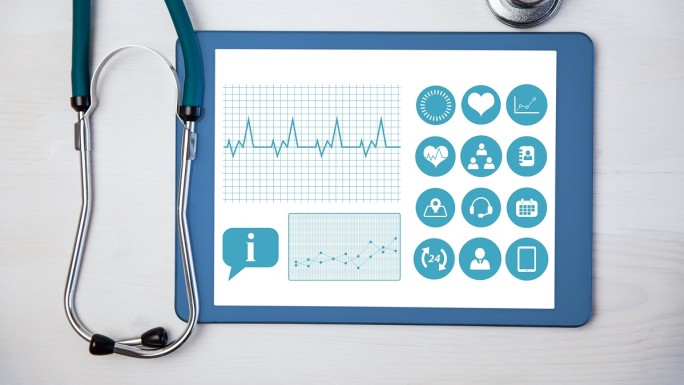Key Features of Drug Information System
With the vast array of pharmaceuticals available, it's crucial for healthcare providers to have access to accurate, up-to-date, and comprehensive drug information. These systems are the backbone of safe and effective medication management, equipping healthcare professionals with the knowledge they need to make informed decisions.
Key features should be included in Drug Information System
Suitable features in drug information systems can significantly contribute to the safe and effective management of medications in healthcare settings. Those features will be excellent assistants for healthcare professionals to reduce the risk of medication errors, improve patient safety, and support informed clinical decision-making.

Drug Database
A centralized and comprehensive database containing detailed information about medications. This includes drug names, dosage forms, dosages, indications, contraindications, drug interactions, adverse effects, and more.
Medication Orders
A system for healthcare professionals to create electronic medication orders, including prescription generation and administration instructions. It reduces the risk of transcription errors.
Allergy and Adverse Reaction Tracking
A component that records and tracks patient allergies and adverse reactions to medications, ensuring that healthcare providers are aware of potential allergens.
Formulary Management
Tools for managing medication formularies, including information about which medications are approved for use within a healthcare facility or insurance plan.
Dosage Calculators
Calculators that help healthcare professionals determine appropriate medication dosages based on patient-specific factors like weight, age, and renal function.
Clinical Decision Support Tools
These tools use the drug database to provide healthcare professionals with real-time alerts, warnings, and recommendations when prescribing, dispensing, or administering medications. Clinical decision support tools help prevent medication errors and improve patient safety.
Patient Medication Profiles
A feature that provides a consolidated view of a patient's medication history, including current and past medications. It helps healthcare professionals make informed decisions about treatment.
Patient Education Materials
Drug information resources can be generated and provided to patients to help them understand their medications, including instructions for use and potential side effects.
Regulatory Compliance and Reporting
Features that help healthcare organizations comply with regulatory requirements, including tracking and reporting adverse events and maintaining accurate records.
7 up-to-date features that drug information system should have

Multi-platform
This feature will help healthcare professionals to seamlessly across various devices and operating systems, and accommodate preferences and workflows. Multi-platform access allows users to access critical drug information not only from desktop computers but also from tablets, smartphones, and other devices. Whether in a hospital setting, pharmacy, or during telehealth consultations, the multi-platform drug information system ensures consistent and reliable access to up-to-date medication data.
Friendly UI/UX interface
The interface employs clear and legible typography, a logical navigation structure, and consistent design elements to create a visually coherent environment. Responsive design ensures compatibility across various devices, catering to the diverse preferences of users. Smart form layouts and efficient search functionalities streamline data entry and retrieval processes, minimizing the potential for errors.
Personalization features, such as customizable dashboards, empower users to tailor their experience, while real-time alerts and effective feedback mechanisms keep them informed and engaged. Accessibility considerations, such as screen reader compatibility, ensure that the system is accessible to users with diverse needs.
Offline access
This capability is useful in healthcare settings where a reliable internet connection may not always be available, such as remote clinics or during emergencies. With offline access, healthcare providers can retrieve critical drug data, dosage information, and potential interactions without depending on internet connectivity. This feature not only supports healthcare professionals in delivering prompt and accurate care in challenging conditions but also safeguards against potential disruptions in medication management processes.
Geolocation
This feature of the drug information system enables healthcare professionals to personalize drug-related information based on the geographical position of patients or healthcare facilities.
In a hospital setting, for instance, the drug information system can utilize geolocation data to provide localized drug availability, dosage recommendations, and relevant clinical guidelines specific to that location. For mobile healthcare providers or telehealth consultations, geolocation can aid in tailoring drug information based on the patient's current position, ensuring that recommendations align with regional guidelines and availability.
Visualized Analytics
By employing visual elements such as charts, graphs, and dashboards, healthcare professionals gain a comprehensive and intuitive understanding of drug usage patterns, medication adherence, and potential trends. Visualized analytics facilitates the rapid identification of outliers or anomalies, allowing for proactive intervention in cases of non-compliance or adverse reactions. Moreover, the visual representation of data trends can aid in strategic decision-making, supporting healthcare administrators in resource allocation, formulary management, and overall optimization of medication-related processes.
Voice search
The rise of voice search is becoming increasingly popular in digital applications and software. This functionality proves particularly beneficial in hospital monitoring applications, catering to patients facing challenges with typing, individuals with visual impairments, or those requiring urgent assistance. Google Assistant, Siri, and Alexa can be employed to enable voice search across a variety of devices.
Access security
This critical feature involves implementing robust authentication mechanisms, access controls, and encryption protocols to restrict system entry to authorized personnel only. Multi-factor authentication adds an additional layer of protection, requiring users to provide multiple forms of identification before gaining access. Role-based access control can refine permissions, ensuring that individuals only access the specific features and data relevant to their responsibilities. Regular audits and monitoring mechanisms track user activities, detecting and responding to any unusual or unauthorized access attempts promptly.
Read more: Guide to finding the best solution for drug information system
Integration with other healthcare systems
Integrating with other healthcare systems is another feature of a drug information system. It ensures that medication information is consistent, up-to-date, and readily accessible to healthcare providers, enhancing patient safety and the quality of care. It also helps streamline workflow processes and reduce the risk of medication errors during transitions of care for healthcare providers.
Electronic Health Record (EHR)
Integration with EHR systems allows healthcare providers to access comprehensive medication data and clinical decision-support tools within the patient's electronic health record. This ensures that medication information is readily available to inform clinical decisions.
Pharmacy Information System
Integration with pharmacy information systems to ensure accurate and timely medication dispensing. It includes features for medication storage, inventory management, and prescription filling.
Laboratory Information System
Integration with laboratory information systems can help healthcare providers monitor and interpret laboratory results related to medications, such as drug levels and therapeutic drug monitoring.
e-Prescribing System
Drug information systems can integrate with e-prescribing systems to allow for the electronic generation of medication orders, ensuring that prescriptions are accurate and electronically transmitted to pharmacies.
Telehealth Platform
For telehealth services, drug information integration allows remote healthcare providers to access patient medication information and provide medication-related counseling.
Conclusion
The world of healthcare is undergoing a profound transformation, and at its core are the ever-evolving drug information systems. These systems have emerged as a support tool for informed decision-making in medication management. Key features of drug information systems have paved the way for a safer, more efficient, and patient-centric approach to healthcare. From real-time clinical decision support to comprehensive medication histories and personalized medicine, drug information system embodies the fusion of technology and medical expertise.
As healthcare continues to advance, it's imperative to recognize and appreciate the instrumental role played by drug information systems in safeguarding patient safety, enhancing the quality of care, and setting the stage for a brighter future in healthcare.









